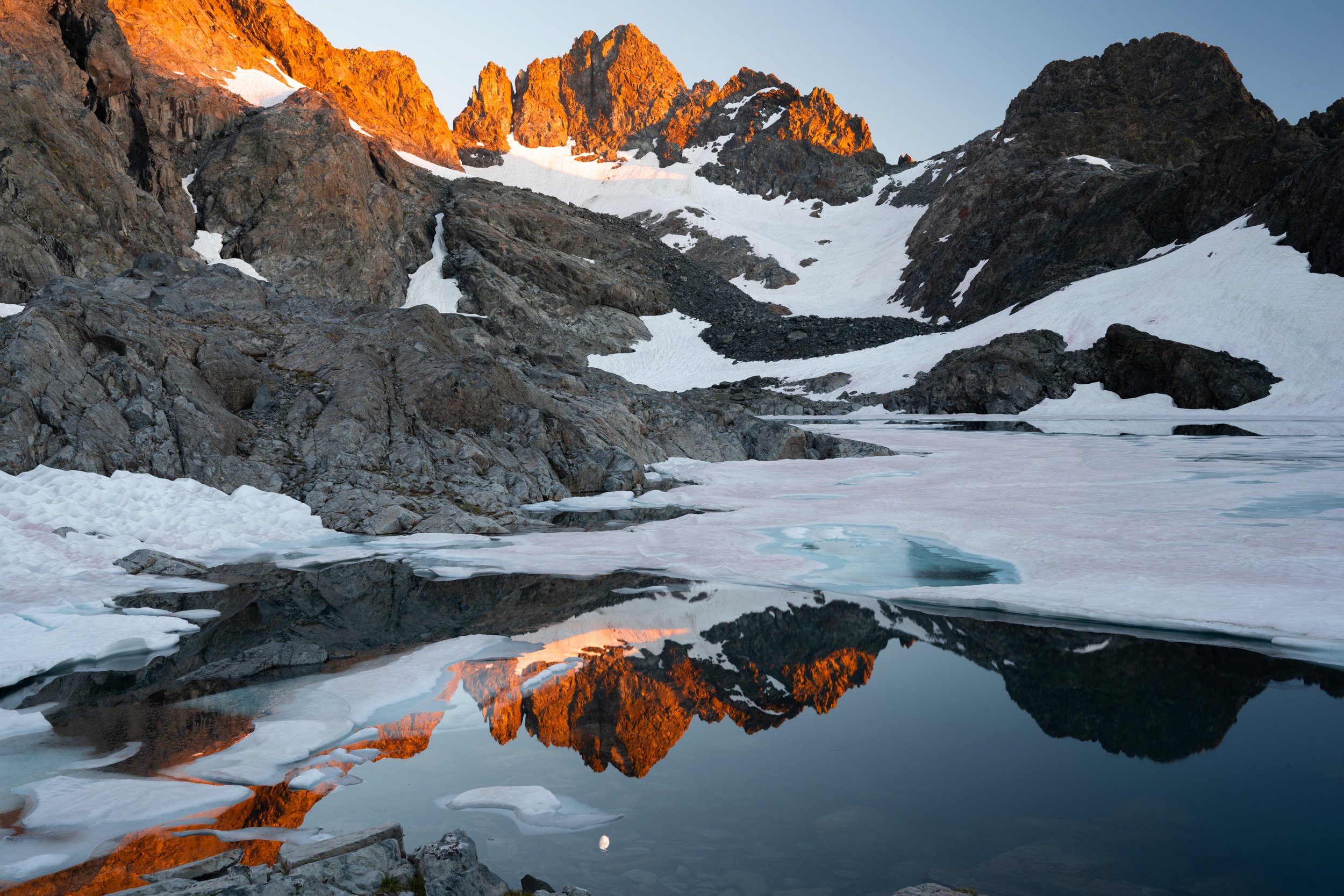Lake Catherine and Ritter Lakes - Aug. 25-28, 2023
I have been wanting to check out this set of glacial lakes for years, ever since I had seen some gorgeous photos of the jade/teal color of Ritter Lakes. They’re nestled in the Ansel Adams Wilderness, probably my favorite area in the High Sierra. I was able to convince my friend Nicole to join me on this trip. She’s not as comfortable with off-trail travel but we made it through with only some minor mishaps. Due to the extremely high snowpack this year, none of the glacial lakes really took on their jade colors...which just means I’ll have to go back next year!
Nicole and I drove out around noon on a Thursday afternoon to avoid rush hour traffic in the Bay Area and also acclimate in Mammoth Lakes (elevation: 7800 ft a.s.l.) beforehand. The morning our hike was to begin, Nicole woke up a little nauseous. We spent some down time in the motel before deciding around 6am that we’d drive down to the trailhead and see how she was feeling then; if she continued to not feel great, I could do the intended trip on my own and she could chill in town and find something else to do. We’re both very self-sufficient and had all of our own gear which made this decision easier.
At the trailhead, she gradually began to feel better so we headed up the PCT/High Trail towards Thousand Island Lake. I had strongly advocated for us to camp at Island Pass instead of Thousand Island Lake to avoid some of the crowds and position ourselves for a better start the next morning.
The next morning, Nicole was feeling nauseous again. She’d forgotten her beanie and slept cold the previous night. We again made a plan B in case she couldn’t make it up to Lake Catherine: she could instead camp at Thousand Island Lake while I spent the night higher up. But I suggested instead that she just use my beanie instead since I didn’t need it as much as she did. I also shared some of my Dramamine with her which seemed to help quite a bit.
Due to the high snow levels, the ascent up North Glacier Pass was easy going until the very top when our pace was slowed by bare talus. None of it was particularly steep nor loose and we slowly made our way down to the lake shore. There aren’t too many places to pitch a tent but we made do with some elevated platforms near the outlet of the lake. It seemed like there might be suitable spots below Ritter as well but heavy snow was covering that side of the lake.
Nicole decided she’d had enough talus hopping for the day so I left her at camp and made my way to Ritter Lakes for sunset. All of Ritter Lakes were still about 75% snow-covered which was great for going over the lake outlets on snow but not great for seeing the true glacial-silt-influenced colors of the water. I made it to the upper lake in a little under an hour and had the entire area to myself.
By the time I’d made it back to camp, it was well past sundown and I cooked dinner by headlamp. At this point, I felt a tightness in the left side of my chest every time I took a deep breath. It was a little unpleasant but I figured it was likely due to the high elevation and would go away the next day as we descended back to the trailhead. This is definitely one of the drawbacks of living at sea level.
I actually felt much better after a few hours of sleep and woke up to photograph the stars. The core of the Milky Way had already set (and the full moon was out during that time anyway) but I was able to capture some nice star trails with my new 20mm/1.8 lens. I’ve not been too interested in astrophotography before but it’s definitely something I’m trying to get better at this year.
The next and final morning, we woke up to a thin layer of ice over the lake. It had been extremely windy the night before so we were just thankful to not have to deal with wind chill as well. The dirt and vegetation on the south side of North Glacier Pass was frosted over when we passed through at 9am as well.
It wouldn’t be a proper wilderness experience for me if the trip didn’t end with somehow me being low on electrolytes. I usually bring Salt Stick chews on my longer hikes and eat a couple every 30-45 minutes. If I don’t, I tend to get low on electrolytes and be nauseous at the end of the day. In the worst case scenario, I end up shaky and vomiting as happened on my hike out of Tapto Lakes (21 miles or so in a day). On this day, we were only going about 13 miles and almost all downhill. I elected to forego the Salt Stick chews and just had some of Nicole’s Nuun tablets.
Near the end of the hike, I started to feel a tingling sensation in my face and also a general feeling of exhaustion. After reading the nutrition label I realized Nuun doesn’t have nearly enough electrolytes so I compensated by downing a shit ton of Salt Sticks in a short period of time. I had to slow my pace down drastically in the last two miles and spent the next several hours in the car feeling like I was going to throw up.
In hindsight, it’s very possible I was suffering from a mild electrolyte overdose instead of a deficiency. The mileage of the day didn’t seem like enough to cause a deficiency and the amount of Salt Stick I consumed to compensate should have definitely been spread out over several hours. As I get older, I find myself having to recalibrate and relearn my limits as well as how to keep myself healthy while on the trail.
I’m already planning to get back to this area next summer, potentially to summit Mt. Davis and spend some more time at Ritter Lakes when they take on their true color!




